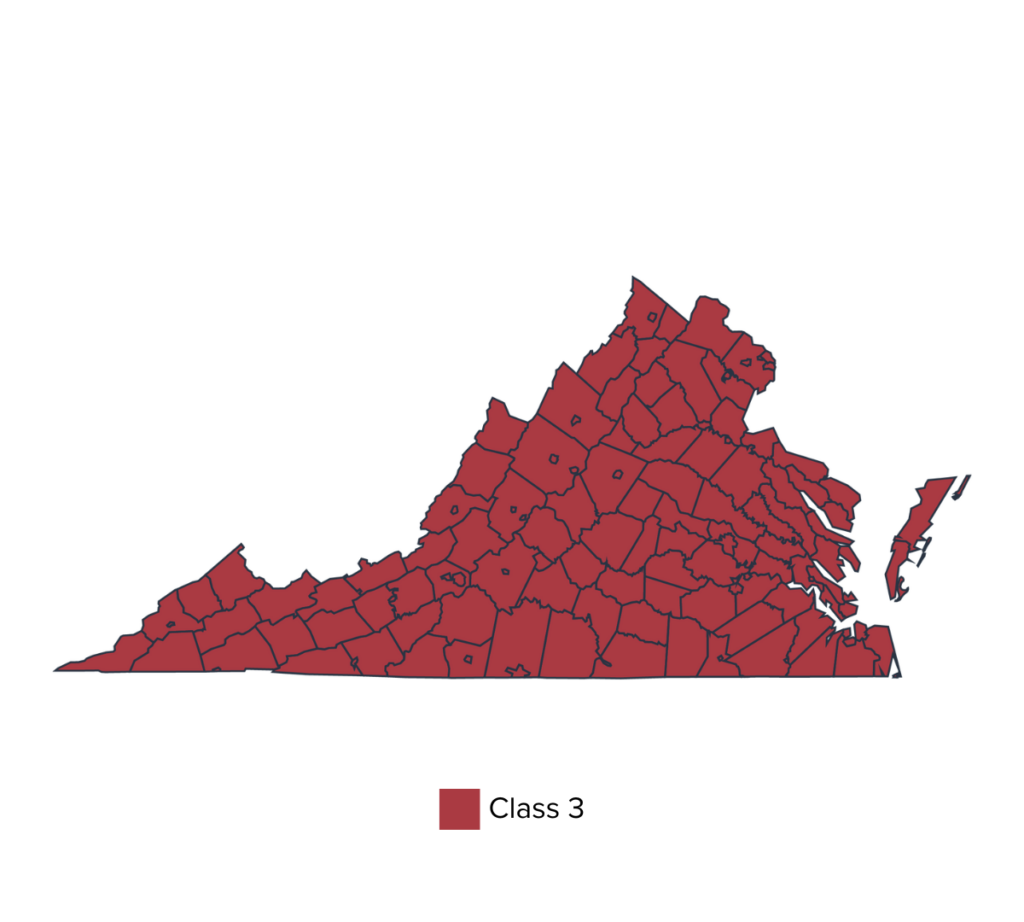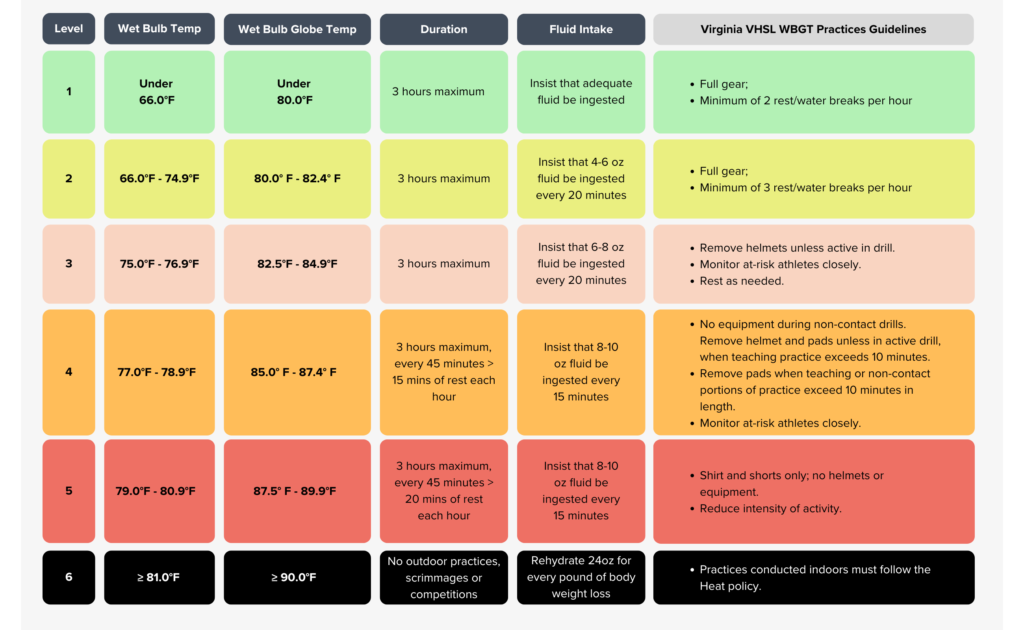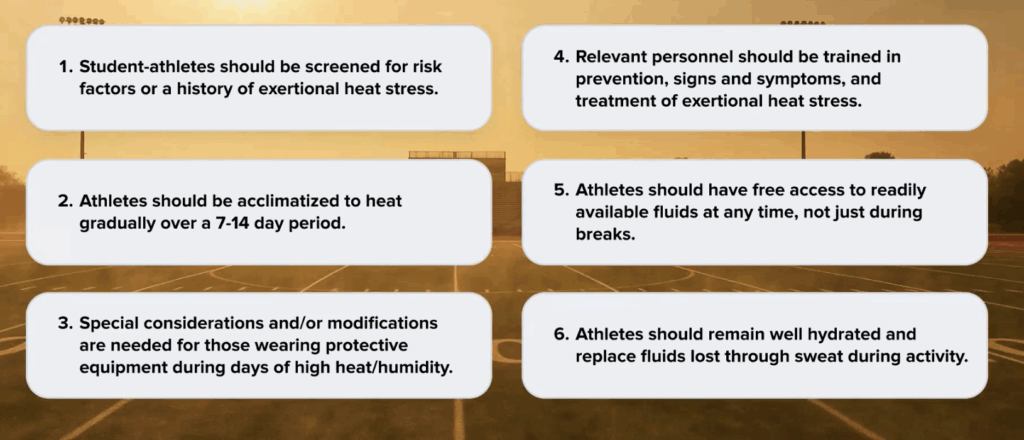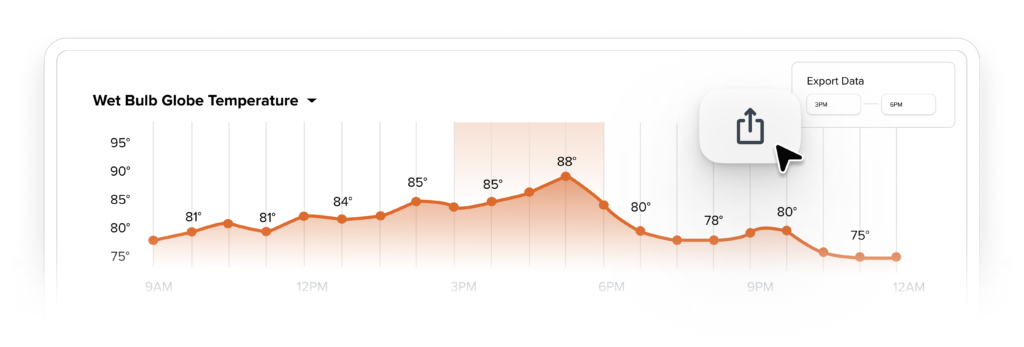Getting Ahead of the Heat: 2025 VHSL WBGT Preseason Playbook
The Virginia High School League (VHSL) has implemented extensive Wet Bulb Globe Temperature (WBGT) guidelines to better protect student-athletes during the hot-weather season.
But understanding and enforcing these rules across six different zones can be a challenge.
In this webinar, Perry Weather’s Blake Harvey and Spencer Patton were joined by Ashley Osborne, Coordinator of Sports Medicine at Prince William County Schools, to break down Virginia’s 2025 heat stress policy and how athletic trainers can ensure compliance—without sacrificing time, accuracy, or athlete safety.
Together, they covered everything from planning safe, high-quality practices during the most brutal weeks of August to offering critical strategies to help you save time, stay compliant, and keep your athletes safe.
Watch the full session or keep reading for highlights and answers to the most common questions from Virginia schools.
What This Webinar Covers
Virginia’s WBGT policy doesn’t leave room for guesswork—and with six heat zones to navigate, athletic trainers need more than just good instincts. In this session, Ashley, Blake, and Spencer break down:
- How to interpret VHSL’s six WBGT zones (Green through Black)
- What it means to be a Class 3 state—and why it matters
- Best practices for in-season heat management and mid-practice transitions
- How to cut down risk, protect athletes, and keep practices running smoothly
- Why handheld tools like Kestrels fall short—and how automation makes a difference
- Key heat trends from 2024 vs. 2025—and what they mean for this fall’s practice plans
Key Takeaways from the VHSL WBGT Webinar

1. Virginia is a Class 3 State for WBGT
VHSL follows Class 3 heat guidelines, meaning its thresholds are less restrictive than Class 1 or 2 states. But with rising summer temperatures and high humidity, athletic trainers still face serious decisions about athlete safety and practice modification.
2. VHSL’s Six WBGT Zones Require Constant Monitoring and Mid-Practice Adjustments
Virginia’s policy includes six specific wet bulb globe temperature (WBGT) zones—from “Green” (full gear permitted) to “Black” (practice shutdown). Each zone outlines detailed limits on duration, breaks, hydration, and equipment. And because zones can shift mid-practice, athletic trainers must stay alert and ready to communicate changes in real time.

3. Communication and Trust Are Just As Important as the Readings
As Ashley Osborne emphasized, strong relationships between athletic trainers, coaches, and students are critical. When everyone understands the reasoning behind a heat call, resistance drops—and safety takes center stage. “We’re not here to ruin practice. We’re here to keep it going safely.”

4. Free Apps and Handheld Tools Cause Confusion—and Conflict
Many schools still rely on weather apps or handheld devices like Kestrels or other WBGT meters. These sources often conflict, leading to unnecessary debates.
Ashley stressed the need to appoint one authoritative voice—ideally, the athletic trainer—and to eliminate the “app comparison” chaos that wastes time and risks safety.
5. On-Site Readings Are Non-Negotiable in a State Like Virginia
From breezy fields near creeks to heat domes surrounded by turf, Virginia’s microclimates vary drastically—even within the same district. County-wide calls don’t cut it. Accurate, site-specific readings are essential to enforce the policy fairly and effectively.
6. Manual WBGT Tools Take Time and Deliver Inconsistent Results
Handheld devices can take 15–20 minutes to calibrate and often require manual logging every 30 minutes. They’re also vulnerable to inaccurate readings if exposed to sunlight or if the sensor size is too small to reflect true human heat stress.
7. Policy-Aligned Alerts Lead to Proactive Practice Modifications
With everyone on the same page, coaches can adjust practice plans in advance. Students know what to expect. And athletic trainers no longer need to justify decisions with screenshots or “plus-ten-degree” rules. “Once everyone sees the same reading, the arguments stop,” Ashley shared.
8. Historical Data Shows 2025 Is Already Hotter Than 2024

Analysis of on-site WBGT data from June 10–August 3 revealed a shift in the hottest hours of the day—from 2–4PM in 2024 to 1–3PM in 2025. There were 17 more “Black” zone days this year. Athletic trainers must stay agile as conditions change—year to year and hour to hour.
9. Perry Weather Supports More Than Just Athletics
Perry Weather’s on-site stations record readings every 5 minutes, automatically issue alerts aligned with VHSL zones, and push notifications to athletic trainers, coaches, and ADs. It reduces the burden on staff, eliminates confusion, and builds trust through transparency.
Prince William County Schools now use Perry Weather not only for sports, but also for PE classes, outdoor events, and even elementary school decisions. Multiple departments—including operations and transportation—rely on the same platform to make informed calls.
What the Data Says: 2024 vs 2025
- In 2025, Virginia saw 17 more black flag days than in 2024 during the same preseason window (June 10 – Aug 3).
- The hottest period shifted from 2–4PM in 2024 to 1–3PM in 2025.
- Practice plans need to adapt accordingly.
- Coaches, athletic trainers, and ADs can’t rely on last year’s heat patterns. Real-time WBGT readings are essential.
FAQs from the VHSL Webinar
How often does the Perry Weather station need to be calibrated?
Never. Perry Weather’s WBGT sensors are designed for low maintenance and long-term accuracy. As Spencer explained during the webinar, the stations don’t require user calibration. “You can put it out there and just let it work,” he said.
Unlike handheld Kestrels, which can drift or become less reliable over time if not recalibrated, Perry Weather’s on-site stations self-monitor and auto-record readings every 5 minutes, with no manual upkeep or calibration needed by staff.
Ashley, do you still use your Kestrel to verify that Perry Weather is accurate?
No, not anymore. Ashley Osborne, the athletic trainer at Prince William County Schools, shared that she trusts the Perry Weather system fully—especially since it delivers real-time, site-specific readings that are automatically shared with her staff.
Does VHSL recognize that NATA guidelines put us in black-flag conditions at WBGT ≥ 92°F? Why?
Yes—and that’s exactly why VHSL lowered its black-zone threshold to 90°F WBGT. As Spencer explained, this shift reflects growing alignment with national best practices. “They moved it down this year because 92 was simply too high… NATA and the Korey Stringer Institute both consider 92 to be very unsafe,” he said. VHSL’s goal is to get ahead of extreme heat—not react to it too late. By adjusting the black-zone threshold to 90°F, VHSL is taking a more conservative and athlete-focused approach to safety.
Why did VHSL lower the WBGT “black-zone” threshold from 92.1 to 90?
The previous threshold of 92.1°F WBGT was considered too high by national standards. “Once it hits 92, you’re already in a dangerous zone. It’s too late,” he noted. VHSL wanted to give schools more time to respond to escalating conditions—before the danger peaks. By lowering the black-zone to 90°F, schools can take preemptive action to modify or cancel practice while there’s still a margin for safety.
Why does our Kestrel read hotter than Perry Weather?
This is a common issue—and it usually comes down to sensor placement and design. As Spencer and Ashley explained, handheld devices like Kestrels are prone to reading higher temperatures if exposed to direct sunlight, not shaded properly, or not acclimated to ambient conditions. Perry Weather’s sensors are shielded, stationary, and continuously calibrated for outdoor environments. They’re designed to reflect true heat stress on the human body—not ambient air alone. Ashley noted, “I used to have that problem with my Kestrel all the time.
Thanks for joining us. We hope the webinar gave you practical takeaways for managing heat stress and keeping athletes safe. Perry Weather removes the guesswork from weather safety decisions—try it yourself with a free two-week trial.











